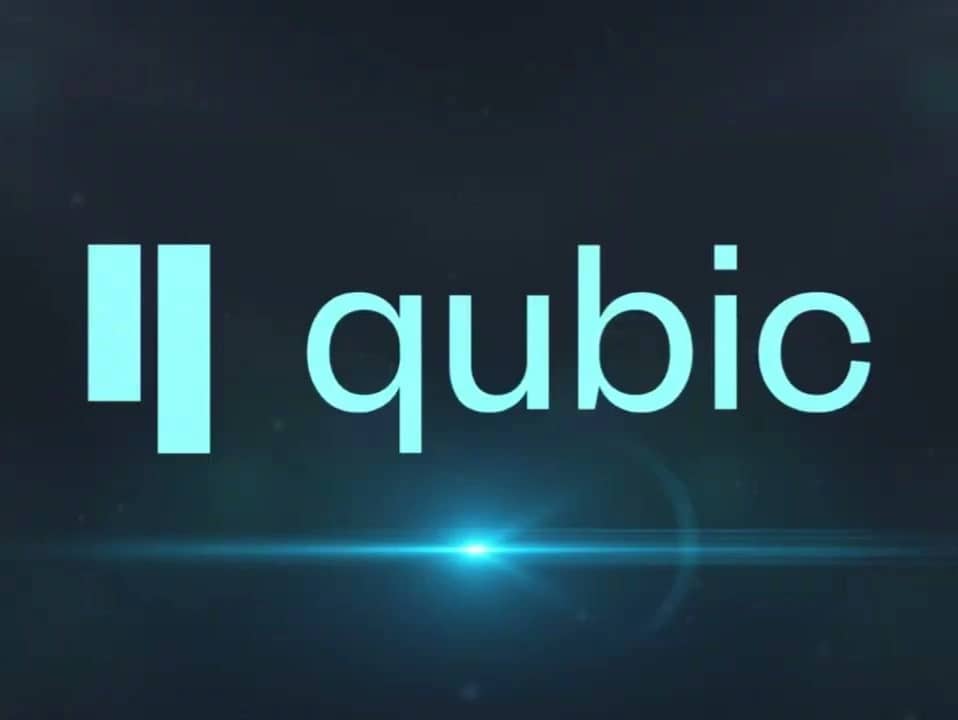위키 구독하기
Share wiki
Bookmark
QUBIC
QUBIC
Qubic(큐빅)은 Sergey Ivancheglo(세르게이 이반체글로)가 설립한 레이어 1 유용한 작업 증명(UPoW) 암호화폐 플랫폼입니다.
"Qubic"라는 이름은 "Quorum-Based Computation"(QBC)의 약자입니다. Qubic은 True AI를 통합하여 계산 능력을 향상시키고 고속 스마트 계약(스마트 컨트랙트) 실행을 목표로 합니다.[1][2]
개요
Qubic은 Sergey Ivancheglo(세르게이 이반체글로)가 설립한 오픈소스 암호화폐 플랫폼으로, 2012년으로 거슬러 올라가는 기원을 가지고 있으며, 스마트 계약(스마트 컨트랙트) 실행을 위해 676개의 컴퓨터(Computors)를 사용하는 쿼럼 기반 계산 시스템(QBC)을 사용합니다. 메인넷은 2022년 2분기에 출시되었습니다. 이 플랫폼은 유용한 작업 증명(UPoW) 시스템을 사용하여 AI 훈련에 채굴 용량을 재사용합니다. 수수료 없는 전송과 수수료 기반 스마트 계약(스마트 컨트랙트) 실행을 지원합니다.
각 에포크는 1조 개의 Qubic Units(QUs)를 생성하며, 주로 컴퓨터(Computors)에 분배되고, 비효율적인 컴퓨터(Computors)는 보상이 부분적으로 소각됩니다. Qubic의 중재자(Arbitrator)는 AI 훈련 작업을 감독합니다. 이 플랫폼은 C++로 빠른 튜링 완전 스마트 계약(스마트 컨트랙트)을 위한 직접적인 "베어 메탈" 코드 실행을 사용하여 신뢰성, 효율성 및 사용자 친화성을 목표로 합니다.[1][2][3]
제품
스마트 계약
Qubic의 스마트 계약(스마트 컨트랙트)은 엄격한 승인 절차를 통해 효율성과 보안을 향상시키는 것을 목표로 합니다. 각 계약은 쿼럼 제안 투표를 거치며, 승인되면 676개의 주식으로 IPO를 통해 출시됩니다. 이러한 접근 방식은 $QUBIC을 계약에 잠금으로써 유통량을 줄입니다. 주주는 계약 수수료에서 수동적 수입을 얻으며, 잠긴 $QUBIC이 고갈될 때까지 계약은 자체적으로 유지됩니다. 초기 계약은 10.5조 개가 넘는 $QUBIC을 소각했습니다.
C++로 설계된 Qubic의 스마트 계약(스마트 컨트랙트)은 베어 메탈에서 직접 실행되어 빠른 실행 시간을 제공합니다. 이러한 계약은 Qubic Units(QUs)를 "에너지"로 사용하며, 실행 중에 QUs가 소각되는 디플레이션 모델을 통합합니다. 또한, Qubic의 오라클 통합을 통해 실제 데이터를 포함하여 다양한 분산 애플리케이션을 지원합니다.[4][1][5]
쿼럼 프로토콜
Qubic의 주요 제품은 트랜잭션, 스마트 계약(스마트 컨트랙트) 및 오라클(오라클) 상호 작용을 감독하는 676개의 컴퓨터(검증자(밸리데이터))를 사용하는 합의 메커니즘(컨센서스 메커니즘)입니다. 이 프로토콜은 트랜잭션 또는 스마트 계약(스마트 컨트랙트)의 결과에 대해 3분의 2 이상(451개 이상)의 컴퓨터가 동의해야 하므로 높은 정확도를 목표로 합니다. 이 시스템은 빠른 블록 시간을 달성하려고 하며, 처음에는 0.2초에 도달했고 2024년 예정된 업그레이드를 통해 더욱 개선될 것으로 예상됩니다.
합의 프로토콜은 AI 채굴 출력을 기반으로 상위 676개의 컴퓨터만 포함하는 쿼럼 기반 계산(QBC) 시스템을 사용합니다. 이러한 컴퓨터는 스펙트럼(Spectrum)으로 알려진 Qubic 원장에서 트랜잭션을 실행하는 역할을 합니다. 이러한 설정은 운영 효율성과 분산화 사이의 균형을 유지하는 것을 목표로 합니다.[1][5][6][7]
오라클 머신
오라클(오라클) 머신은 주가 및 스포츠 점수와 같은 정확한 외부 데이터를 제공하여 Qubic 스마트 계약(스마트 컨트랙트)을 향상시키는 것을 목표로 합니다. 스마트 계약(스마트 컨트랙트)에 신뢰할 수 있는 정보를 제공하여 실제 이벤트와 상호 작용할 수 있도록 합니다. 오라클(오라클) 머신은 또한 Aigarth가 외부 조건을 관찰하고 아웃소싱된 계산을 수행하는 것을 지원합니다.[1]
AI Aigarth
AI Aigarth는 Qubic 네트워크에서 작동하도록 설계된 인공 지능 시스템입니다. Qubic-AI-마이너의 계산 능력을 활용하여 인공 신경망(ANN)을 생성하고 훈련하여 오픈소스 AI를 개발하는 것을 목표로 합니다.
Aigarth는 참가자의 사용하지 않는 계산 리소스 기여를 활용하여 AI 과제를 해결하도록 설계되었습니다. 이 시스템은 문제 해결을 위해 진화 알고리즘을 사용할 계획이며 진행 상황을 실시간으로 추적하는 메커니즘을 제공합니다. 회전 논리를 통해 계산 효율성을 높이도록 설계된 Helix 논리 게이트를 통합합니다. Aigarth는 2024년 7월 현재 개발 중입니다.[1][8]
유용한 작업 증명(UPoW)
Qubic의 유용한 작업 증명(UPoW)은 AI 훈련 작업을 통합하여 기존의 작업 증명(Proof-of-Work)을 재정의합니다. 수학적 퍼즐을 푸는 대신 컴퓨터(Computors)는 AI 계산을 수행하며, 이는 기계 학습 발전에 기여합니다.
이러한 접근 방식은 에너지 효율과 계산 리소스의 실제 응용 프로그램을 개선하는 것을 목표로 합니다. 처리 능력을 AI 훈련에 집중함으로써 UPoW는 네트워크 보안과 분산화를 지원하는 동시에 표준 PoW(PoW) 시스템에 비해 에너지 사용량을 줄일 수 있습니다.[1][5][9]
잘못된 내용이 있나요?
